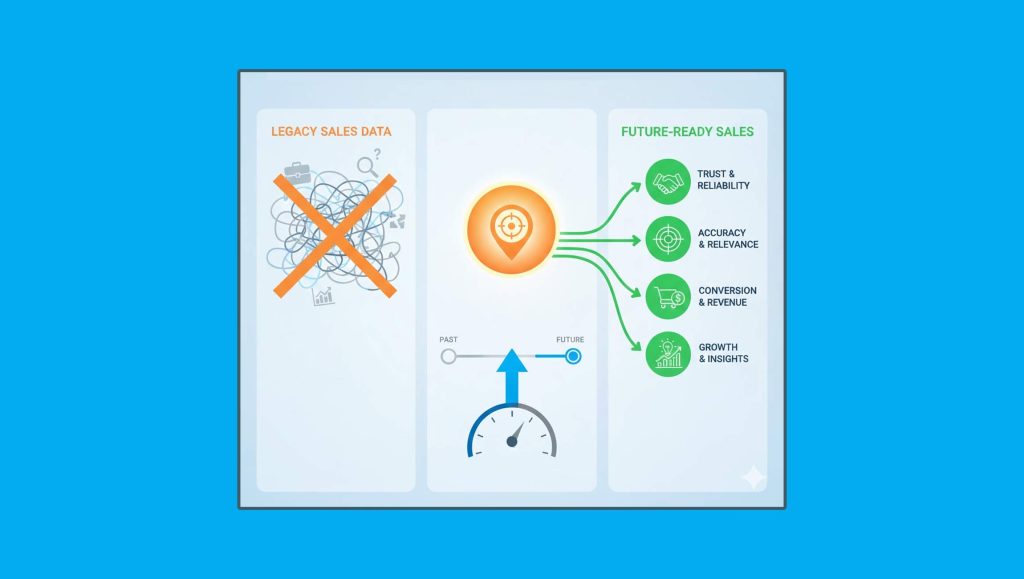When it comes to lead generation strategies, far too many salespeople underestimate the power of growing their professional network. Rather than taking the time to build relationships with new leads, salespeople often spend their days pitching their products or services to as many people as possible. A recent study found that half of all salespeople fail to follow up on initial leads, and only 10 percent adhere to a consistent follow-up process.
It’s hard to overstate the impact of the money these salespeople are leaving on the table. While other sales tactics may yield short-term results, consistent networking can help salespeople create the foundation for long-term success and establish a stellar reputation among their target audience. From a logical standpoint, networking simply gives salespeople more opportunities to not only foster connections with people who are in the market for their offerings, but also connect with people they would have never met through traditional outreach strategies.
With this in mind, here are three reasons networking should be any salesperson’s bread and butter, followed by a few basic fundamentals for networking like a pro.
Put likability to use
If you were to ask a room of salespeople to name their greatest asset, most of them would almost certainly say something along the lines of character, personality, or just plain likability. This makes sense, since closing a sale involves gaining your customer’s trust and showing that you can relate to them on a human level.
Well, networking allows salespeople to put this asset on full display. Instead of just trying to make another sale, you’re actively facilitating a meaningful conversation that will hopefully leave a lasting impression. This is your chance to show potential customers that you’re a forthright and hard-working individual who should clearly be rewarded with their business.
If you communicate these traits effectively, someone who isn’t interested in buying will at least be willing to give you a referral, which brings us to our next point.
Higher likelihood of referrals
Contrary to popular belief, referrals are not merely a natural outcome of knowing a lot of people. The key to receiving more referrals is simply providing people with a lot of referrals yourself.In other words, in order to get, you gotta give.
For example, you might not be able to help a new contact with copywriting, but you might know a very good copywriter who specializes in a particular writing style. In response to your kind gesture, your new contact will very likely go out of their way to recommend your offerings to a high quality lead. Likewise, your friend the wordsmith now has a reason to send a potential customer your way as well.
This reciprocity can be highly advantageous, but it’s only available to those who make the effort to leverage and expand their network. That’s really all strategic networking is: finding ways to make yourself useful so that your new contacts make themselves useful to you in return.
Read More: SalesTechStar Interview With Scott Kolman, CMO At Cresta
Know your customers, inside out
When you engage in reciprocal conversations with potential customers – as opposed to one-sided sales pitches – you have the chance to gather extremely valuable data about their needs, pain points, and lifestyle. In other words, you get to know your target audience on a much deeper level and gain a firmer understanding as to the main reasons someone would – or wouldn’t – choose to purchase your offerings.
Traditional outreach strategies like cold-calling simply don’t give you enough time to extract this information. It’s either a “yes” or a “no.” There’s typically not much room for an in-depth “why?” This is why taking the long view and using networking techniques to build a network of relationships rather than a mere list of contacts is much more effective for all involved.
The insights you glean from networking can help you tailor your overall sales strategy to your target audience’s most pressing concerns. You can also incorporate key details about their lives into your communications, giving potential customers the impression that your offerings were designed with them in mind. This will also make you seem less like a robotic salesperson and more like a human being who legitimately wants to help other people.
Essential networking tips
The benefits of networking are reserved for those who approach new contacts with the correct mindset. That’s right: networking is a legitimate skill with its own set of dos and don’ts. The more you adhere to these basic fundamentals – rather than just “winging it” with new contacts – the more your conversations will produce the intended results.
Here are a few universal rules for the art of networking:
1. Give before you get:
You can’t expect someone to help you if you don’t help them first. When introducing yourself to new contacts, make it abundantly clear that you’re not just talking to them to further your own career. Instead, you give them the impression that you’re talking to them because you genuinely believe you can help them. The benefits of networking will naturally come to you if you are prepared to give with no expectation of an immediate reward.
Think about it: wouldn’t you want to help someone who instantly comes across as generous and selfless? That’s also the kind of reputation that warrants a steady stream of referrals.
2. Be patient and listen:
Though it’s tempting to get to the “you scratch my back, I’ll scratch yours” part of networking as quickly as possible, you can’t start a conversation by highlighting your goods and services. Remember, networking is about long-term success, and building relationships takes time. So, try to find a common interest to break the ice and get your new contact to open up to you. After all, anything new you learn about your target audience you can then harness to improve your sales strategy.
3. Follow up:
Once you’ve established a connection with a new contact, it’s absolutely crucial to send a friendly follow-up shortly after the first interaction. Odds are, you’re not the only salesperson they’ve spoken to recently. Following up will help you stand out from your new contact’s other recent interactions and show your new contact that you truly value their friendship. Remember: simply following up will instantly distinguish you from the 50 percent of your competitors who don’t.
Regarding the time frame, sooner is usually better. You shouldn’t wait more than three or four days to follow up. Lastly, you must have something to follow up with, like a helpful piece of information or an interesting article apropos of your recent conversation. Don’t just follow up for the sake of it.
Read More: How Trust and Value Drive Purchasing Behavior in an Era of Inflation
Final thoughts
The right connection can change your life, but those connections are not just going to show up at your front door. You have to come to them and put in the effort to unlock these life-changing relationships. Networking doesn’t so much offer instantaneous rewards as create genuine relationships that can lead to much more than a single sale. It’s all about planting the seeds and knowing you’ve followed all the correct steps to make your networking blossom into a whole world of new opportunities.
Eventually, your network will become an essential component of your sales strategy, so much so that you’ll wonder how you ever got by without it.
BONUS READ – Jon Miller, CMO at Demandbase chats about the evolution of ABM in this webchat with MarTechSeries:





















